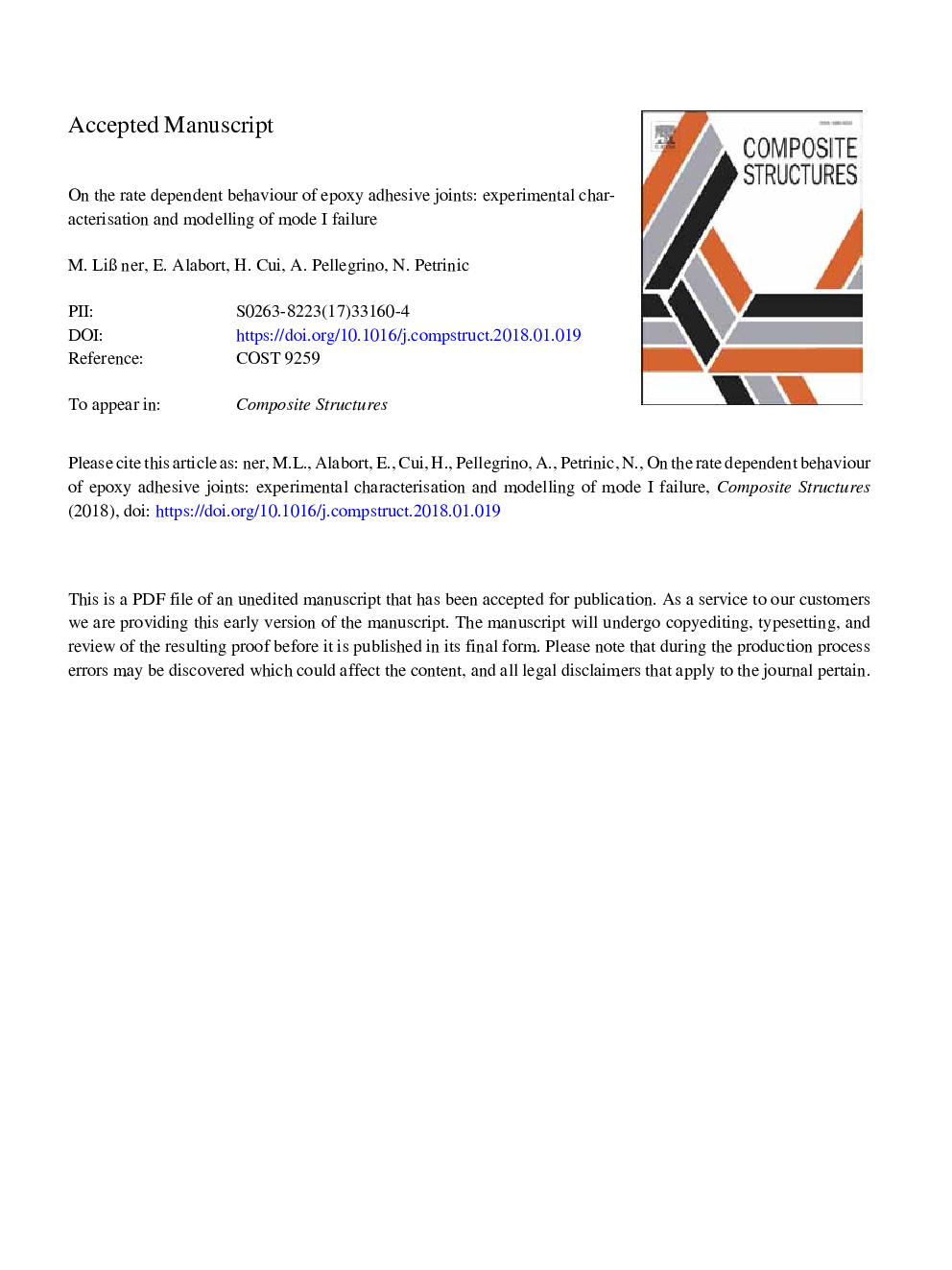| Article ID | Journal | Published Year | Pages | File Type |
|---|---|---|---|---|
| 6703957 | Composite Structures | 2018 | 43 Pages |
Abstract
The increasing use of adhesive joints in dynamic applications require reliable measurements of the rate-dependent stress-displacement behaviour. The direct measurement of the stress-displacement curve is necessary when using cohesive models in discretised solutions of boundary value problems in solid mechanics. This paper aims to investigate the rate-dependent tensile failure of adhesive joints by using a new experimental methodology - it relies upon the combination of the stress wave propagation theory and digital image correlation methods on high speed footage to quantify the tensile stress and the dissipated energy respectively. For this purpose, the Split Hopkinson Bar methodology was employed - the experimental configuration was optimised using numerical modelling. To prove the sensitivity of our framework, two different adhesives are characterised at different loading rates: the adhesive failure strength was found to increase considerably with the strain rate, while the plastic deformation of these adhesives was reduced. The film adhesive showed superior performance over the particle toughened one. In the final part, a rate-dependent cohesive zone model is proposed, one which captures the measured behaviour and which has the potential to be used in industrial applications.
Related Topics
Physical Sciences and Engineering
Engineering
Civil and Structural Engineering
Authors
M. LiÃner, E. Alabort, H. Cui, A. Pellegrino, N. Petrinic,
